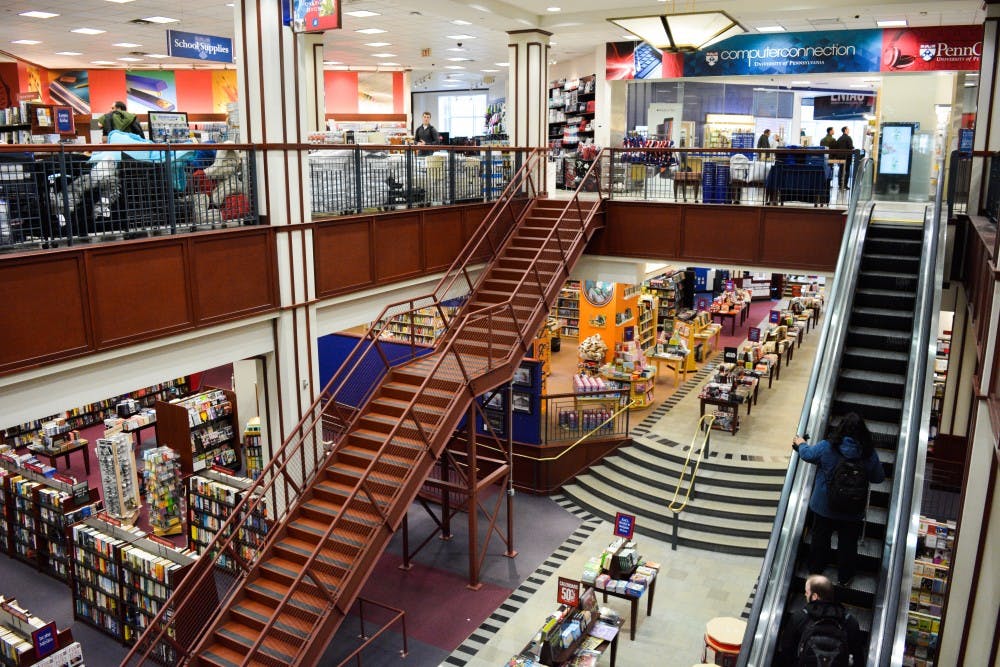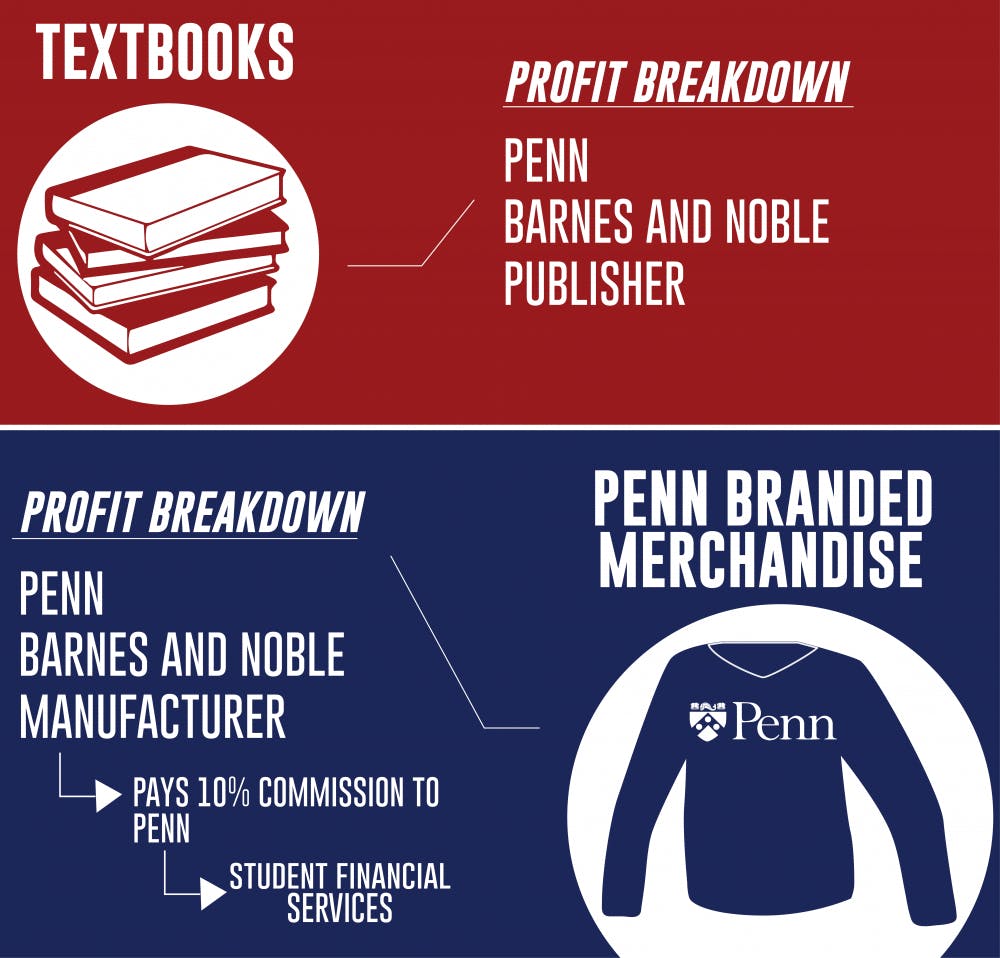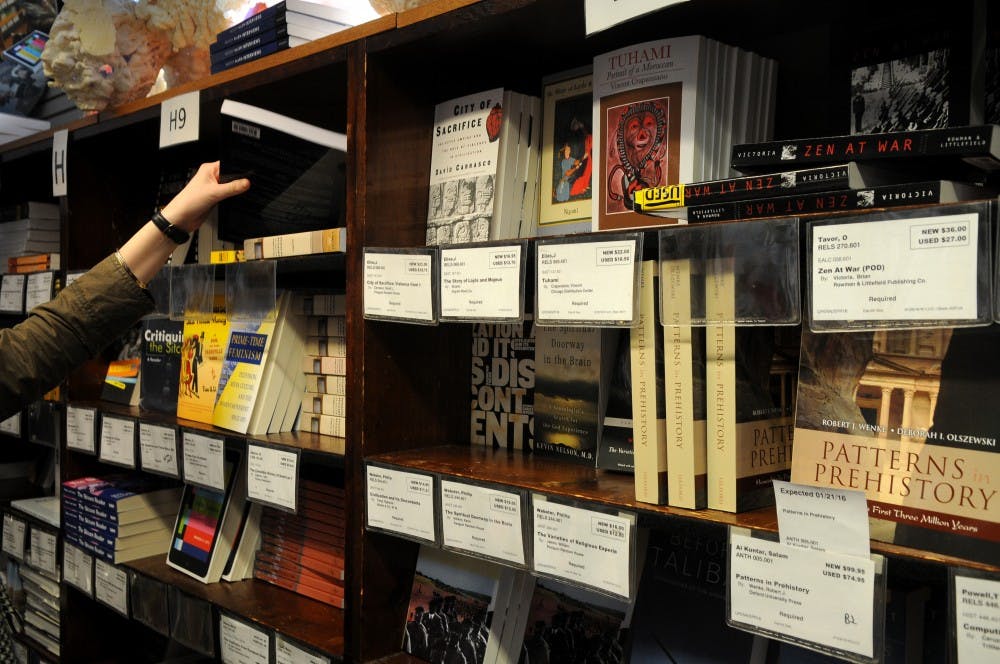
Penn students will spend an average of about $1,318 on books and supplies during the 2018-2019 academic year, according to estimates from Penn’s Student Registration and Financial Services Office. That's a 2.9 percent increase from last year.
Most of these textbooks will be bought from the Penn Bookstore, located at 36th and Walnut streets and operated by Barnes & Noble Education. B&N manages the daily operations and profits from textbook sales, though Penn receives a commission on every sale, Associate Vice President of Penn’s Business Services Division Christopher Bradie said.
Bradie declined to reveal the percentage from each sale that Penn receives, but said the commission goes toward covering the infrastructure cost of operating the store, including utilities such as heating, air, electricity, and a portion of the recent renovation.
For any Penn-branded product sold in the bookstore, Penn will also receive 10 percent additional licensing revenue from manufacturers. All of that additional revenue — except from products containing the Penn Athletic crest which helps fund Penn Athletics — goes toward Penn's $224 million undergraduate budget for financial aid. Bradie declined to reveal the exact amount this revenue amounts to.

The majority of the bookstore's profits do not come from textbook sales, Bradie said, even with the high seasonal demand for textbooks from August to October. According to Bradie, textbooks are one of the items with the lowest profit margins in the store.
Nonetheless, many students believe the textbooks sold at the Penn Bookstore can often be too expensive to afford.
“I feel like the prices here [are higher] when compared to local bookstores; there’s no attempt to make it more affordable for students,” first year College graduate student Alex Royt said. “It’s a constant debate in my mind: Should I get the book and pay that much or should I just leave it and find another way to get it?”
In response to these complaints, Bradie said much of a textbook's price is pre-determined by the publisher even before it arrives at the bookstore, and that these are often due to costs associated with printing and copyrights.
According to U.S. News, a study from the National Association of College Stores revealed that on average, 21.6 cents per dollar on a textbook goes toward the bookstore. A 2008 study from the National Association of College Stores stated that on average, for every dollar the publisher uses, 15.4 cents go toward marketing, 11.7 cents toward authors, and 32.2 cents toward printing and publisher salaries.
Bradie also said Penn has been working to set textbook prices below or equal to industry standards, as well as taking steps to make them more affordable through the rental program. About 85 percent of the books at the bookstore are available to be rented, which he said could be 25 to 80 percent cheaper for students.

Many students forgo trips to the bookstore to buy their textbooks, preferring instead to pursue other outlets.
In 2016, the bookstore also began to offer a price-matching program for books sold through the Amazon warehouse, the Barnes & Noble Education company, and local sellers in order to aid student affordability. Students said they remain uncertain about its success in lowering costs.
"When I tried [the price-matching program] a couple years ago, there were so many restrictions and exceptions that it wasn’t even worthwhile,” College senior Alyssa Yun said. “I am always never going to buy a book. I am going to rent a book if I can and just overall, I know there are other options than buying a book from the bookstore.”
While there are some growing alternatives to the Penn Bookstore such as online marketplaces like the “Textbook Exchange” and “Free and For Sale” groups operated for Penn students on Facebook, some other options have also been eliminated in recent years. In 2017, the Penn Book Center located at 130 S. 34th St. announced that it would stop selling course books because of "a steady decline in … course-book sales and profitability over the past several years.”
Wharton sophomore Emily Izmirian said that apart from the bookstore, she doesn't have other alternatives.
“Most of the textbooks that I have are the Wharton-specific ones, so I feel the only place I can get them is the Penn Bookstore," she said. "I don’t really have a choice, I have to buy the $300 textbook."
The Daily Pennsylvanian is an independent, student-run newspaper. Please consider making a donation to support the coverage that shapes the University. Your generosity ensures a future of strong journalism at Penn.
Donate







